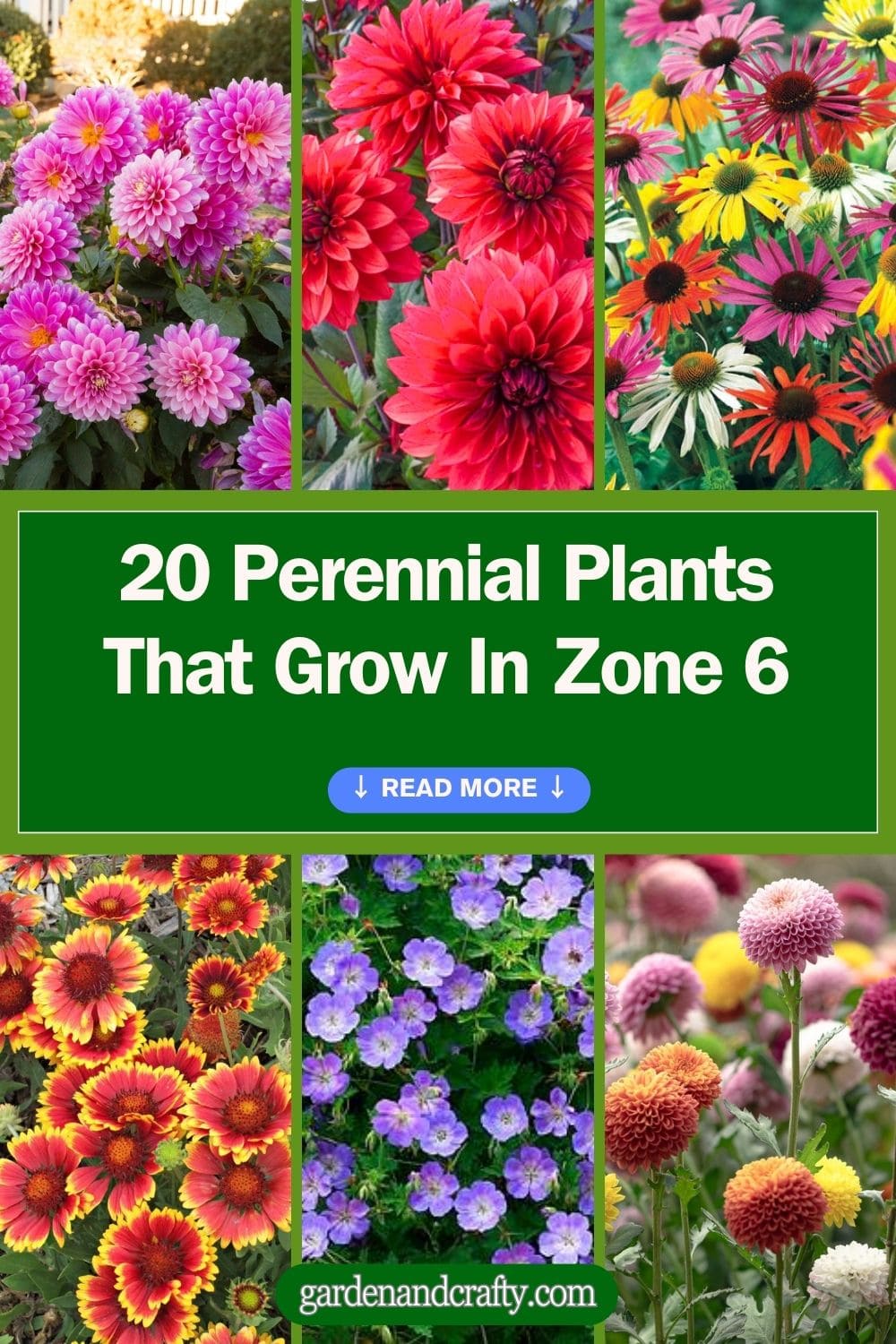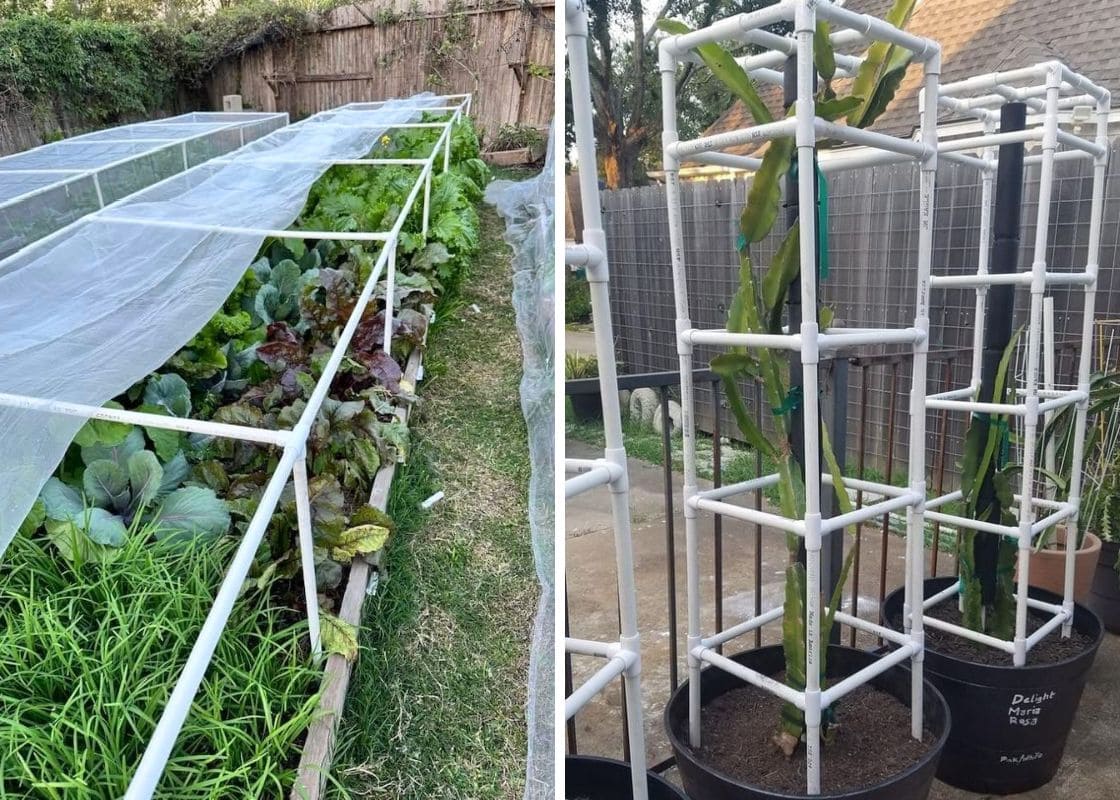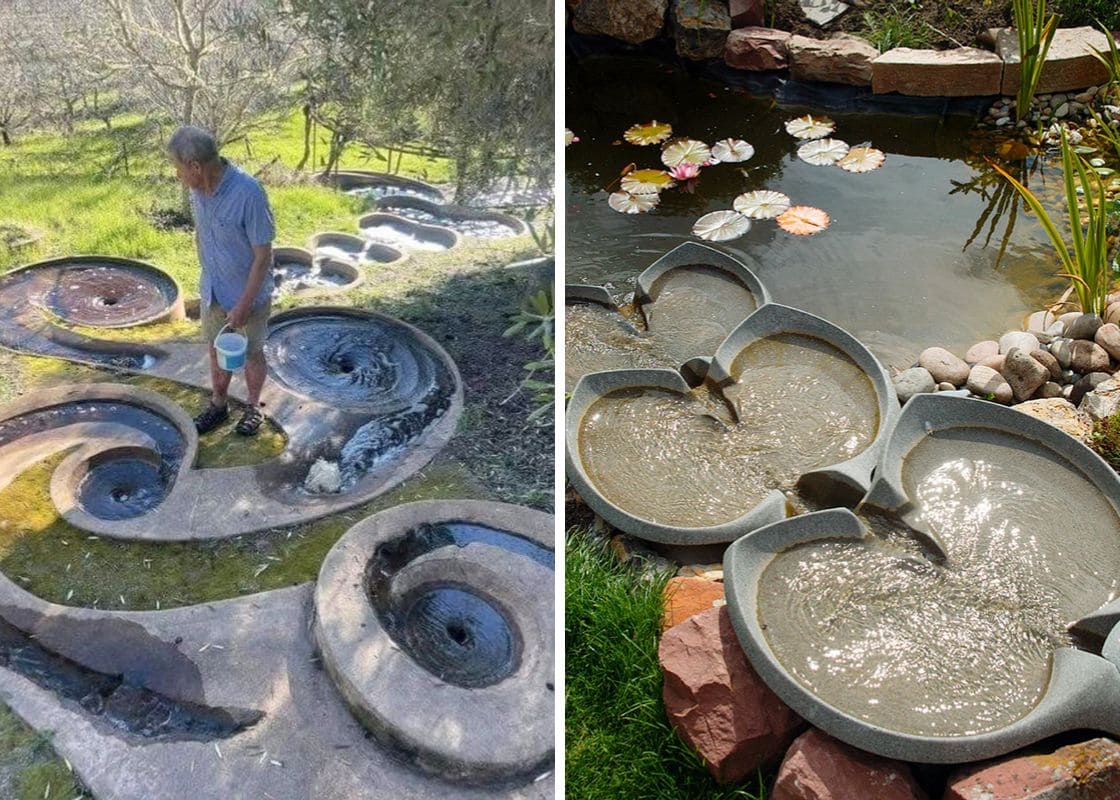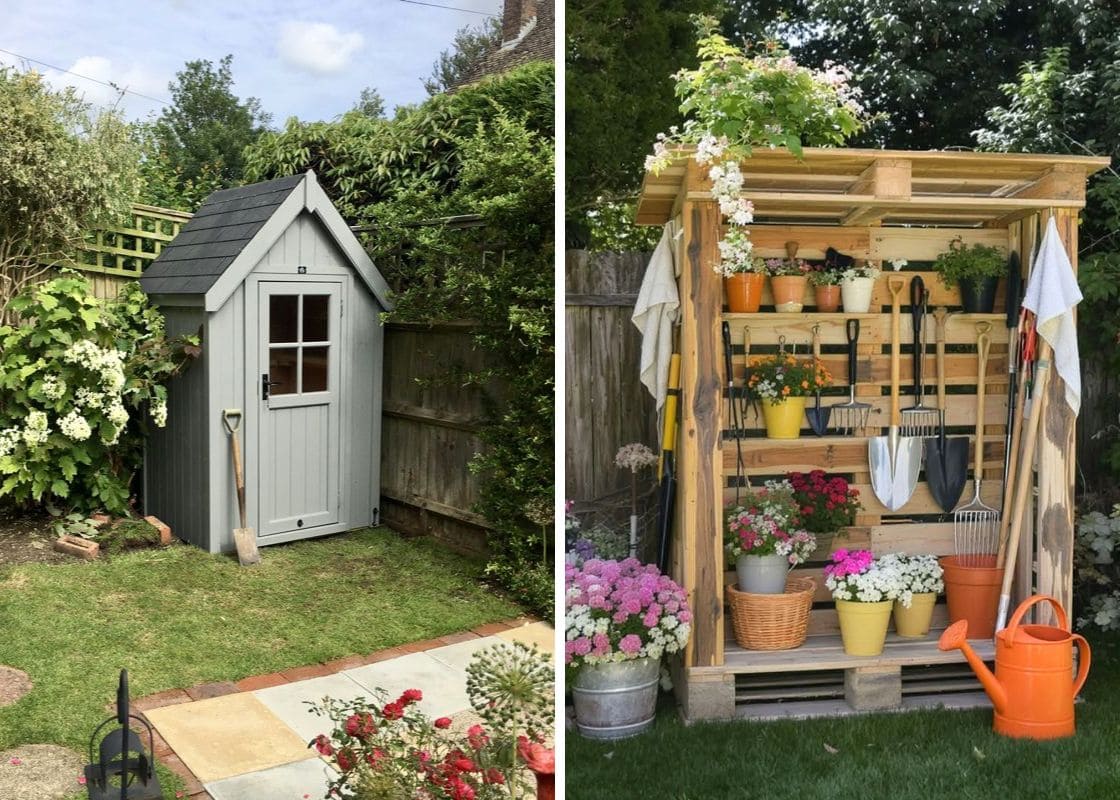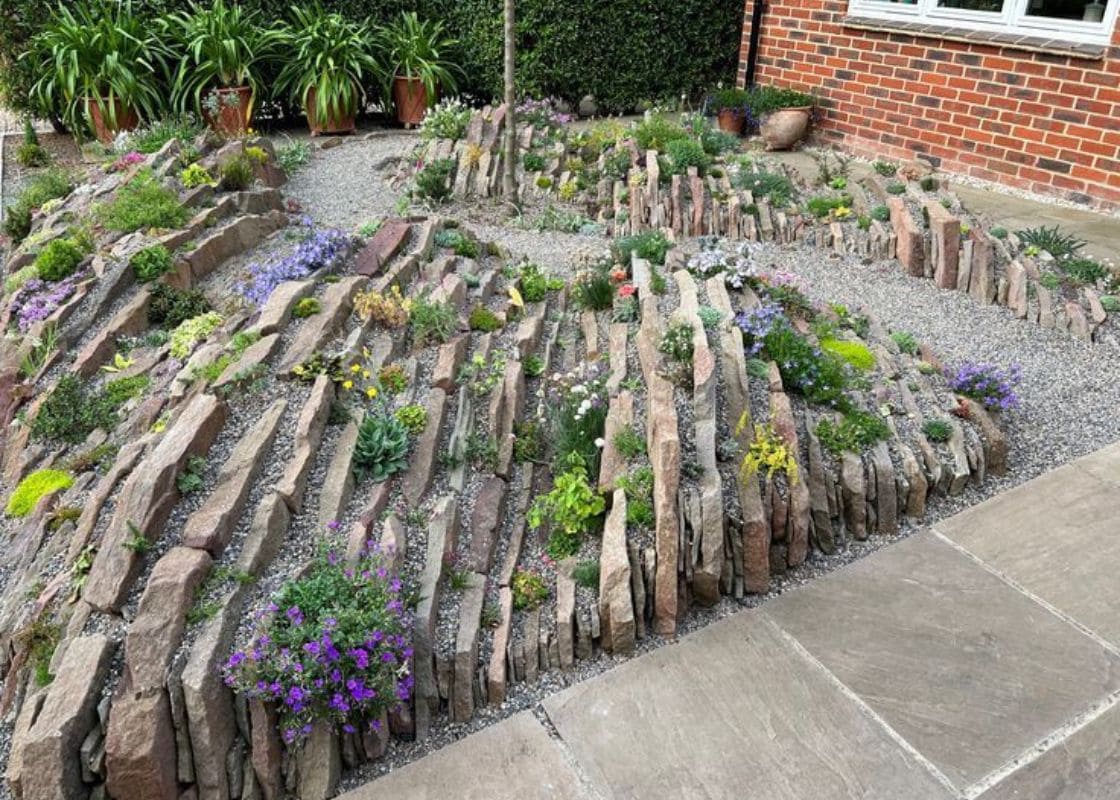Zone 6 with its temperate climate supports a variety of perennial plants. These plants, suited to withstand the winter, return each spring and ensure a vibrant garden.
Perennial plants are enduring, easy to maintain, and offer seasonal beauty with their blooms and foliage.
By choosing perennials perfect for Zone 6, you can craft a stunning garden that flourishes across seasons.
Peony (Paeonia lactiflora)

- Mature Size: 2-4 feet tall and wide
- Bloom Time: Spring to early summer
- Sun Exposure: Full sun to part shade
- Soil Requirement: Well-drained soil
Peonies boast large, fragrant blooms in white, pink, red, and yellow. The lush, glossy, dark green foliage provides a stunning backdrop for the vibrant flowers.
These plants thrive in full sun to part shade and prefer well-drained soil. Once established, they are drought-tolerant, but regular watering is crucial.
Zone 6 provides the perfect climate for peonies, with its cool winters and temperate summers. Peonies require a period of winter chill to break dormancy and promote blooming.
Historically, the name “peony” is derived from Paeon, a physician to the gods in Greek mythology, underscoring its traditional medicinal significance.
Astilbe (Astilbe spp.)
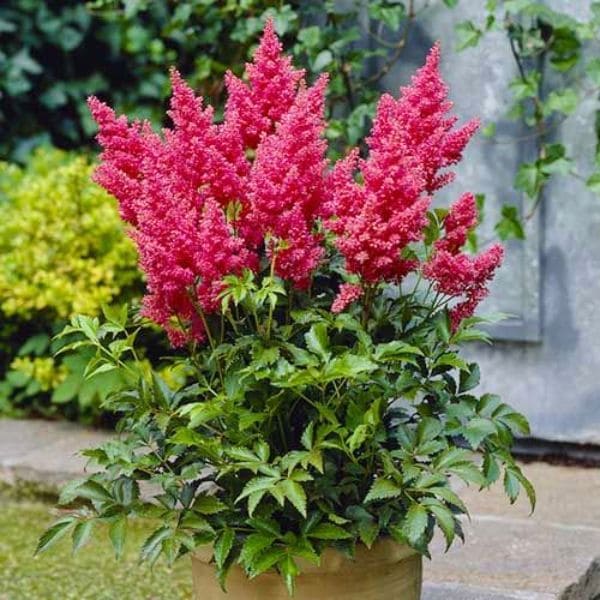
- Mature Size: 1-3 feet tall and wide
- Bloom Time: Summer
- Sun Exposure: Part shade to full shade
- Soil Requirement: Moist, well-drained soil
Astilbes feature feathery plumes of flowers in shades of pink, red, white, and purple, contrasting beautifully with their fern-like, green foliage.
Astilbes prefer part shade to full shade making it suitable for Zone 6.
Its shade tolerance is perfect for tricky garden areas with little sunlight. Use them in borders, shade gardens, or as ground cover to create a lush, colorful landscape.
In addition, its extract has been used to treat ulcers, childbirth bleeding, inflammation, body aches, and dysentery.
Coral Bells (Heuchera spp.)
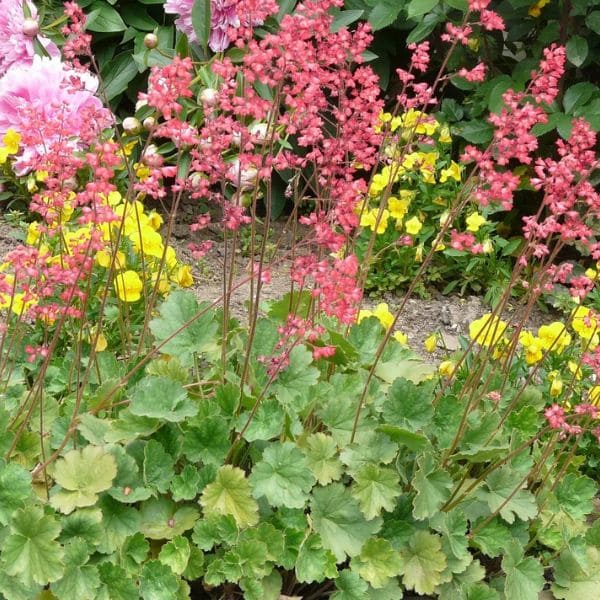
- Mature Size: 1-2 feet tall and wide
- Bloom Time: Late spring to summer
- Sun Exposure: Part shade to full shade
- Soil Requirement: Well-drained soil
Coral bells have striking foliage ranging from deep burgundy to lime green, and even variegated patterns. Their delicate, bell-shaped flowers bloom in late spring to summer.
They thrive in part shade to full shade, making them ideal for the diverse light conditions often found in Zone 6 gardens.
Ideal for borders, containers, and ground covers, coral bells offer year-round visual appeal. They can pair with tiarella and brunnera to create a rich tapestry of colors and textures.
Shasta Daisy (Leucanthemum × superbum)
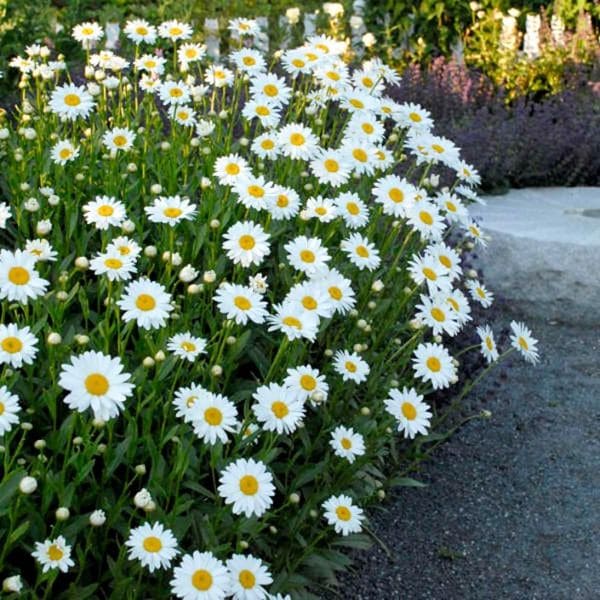
- Mature Size: 2-3 feet tall and 1-2 feet wide
- Bloom Time: Summer
- Sun Exposure: Full sun
- Soil Requirement: Well-drained soil
Shasta Daisies, inspired by California’s Mount Shasta, feature bright white petals and sunny yellow centers.
They are well-suited to Zone 6 due to their preference for full sun and well-drained soil.
They are remarkably low-maintenance and drought-tolerant once established, making them ideal for gardeners seeking a resilient and easy-care plant.
Additionally, Shasta Daisies are deer-resistant, ensuring that your garden remains undisturbed by these common visitors.
Hellebore (Helleborus spp.)

- Mature Size: 1-2 feet tall and wide
- Bloom Time: Late winter to early spring
- Sun Exposure: Part shade
- Soil Requirement: Moist, well-drained soil
Hellebores are prized for their early blooming period, with nodding flowers adding much-needed color during the dreary winter months.
Hellebores thrive in part shade and prefer moist, well-drained soil, making them perfect for woodland gardens or shaded borders.
Their tolerance to cold temperatures and ability to bloom in the cooler months make them exceptionally suitable for Zone 6.
Historically, parts of the black hellebore plant have been used for ailments like nausea, worms, kidney infections, colds, and constipation.
Lavender (Lavandula)

- Mature Size: 1-3 feet tall and wide
- Bloom Time: Late spring to summer
- Sun Exposure: Full sun
- Soil Requirement: Well-drained, sandy soil
Lavender has aromatic foliage and beautiful spikes of purple, blue, or sometimes white flowers. Its silvery-green foliage provides a lovely contrast to its vibrant blooms.
Lavender is particularly well-suited for Zone 6 due to its ability to withstand the region’s temperate climate.
Thriving in full sun, lavender prefers well-drained, sandy soil and is exceptionally drought-tolerant once established.
Additionally, it is deer-resistant, ensuring that your plants remain undisturbed by garden pests.
Bergenia (Bergenia spp.)
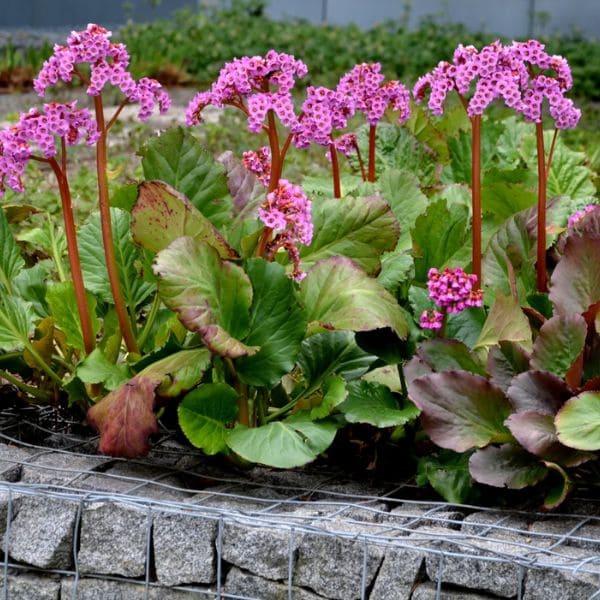
- Mature Size: 1-2 feet tall and wide
- Bloom Time: Early spring to late spring
- Sun Exposure: Part shade to full shade
- Soil Requirement: Moist, well-drained soil
Bergenia, often known as “Pig Squeak” due to the sound its leaves make when rubbed together, has large, glossy, evergreen leaves and clusters of pink, red, or white flowers that bloom in early to late spring.
Bergenia thrives in part shade to full shade, making it perfect for the diverse light conditions found in many Zone 6 gardens.
Bergenia thrives in part shade to full shade and prefers moist, well-drained soil. This low-maintenance plant is both drought-tolerant and deer-resistant.
Liatris (Liatris spicata)
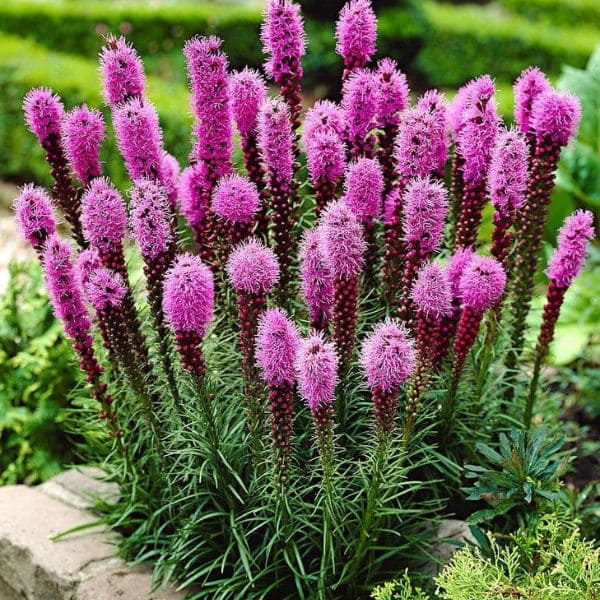
- Mature Size: 2-4 feet tall and 1-2 feet wide
- Bloom Time: Summer to early fall
- Sun Exposure: Full sun
- Soil Requirement: Well-drained soil
Liatris features tall, spiky flower stalks that bloom from top to bottom in shades of purple, pink, and white during summer to early fall.
Liatris thrives in Zone 6, benefiting from the region’s moderate climate.
Thriving in full sun and well-drained soil, it is an excellent choice for sunny garden spots. It is low-maintenance and drought-tolerant once established, requiring minimal care.
This perennial is perfect for adding height to borders and wildflower gardens. It also makes an excellent cut flower, adding a touch of elegance to floral arrangements.
Lungwort (Pulmonaria spp.)
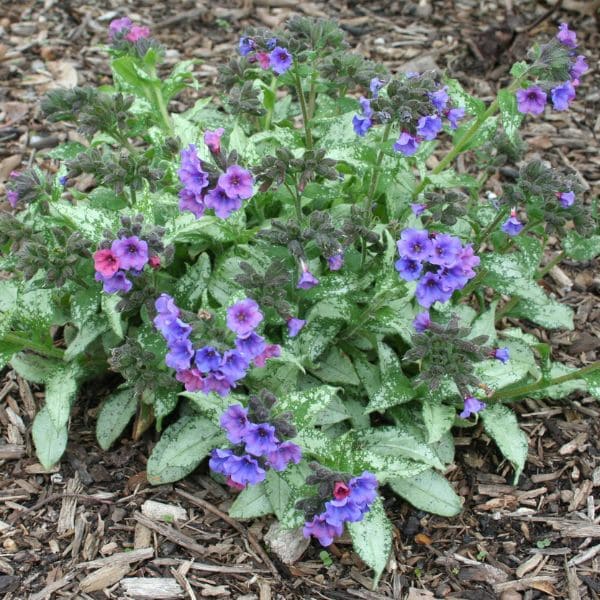
- Mature Size: 1-1.5 feet tall and wide
- Bloom Time: Early spring
- Sun Exposure: Part shade to full shade
- Soil Requirement: Moist, well-drained soil
Lungwort owns distinctive speckled foliage and clusters of tubular flowers that transition from pink to blue as they mature. Historically, its leaves are used in herbal medicine for lung conditions.
Lungwort thrives in part shade to full shade and prefers moist, well-drained soil, making it an ideal choice for Zone 6 gardens.
Thriving in part shade to full shade, lungwort prefers moist, well-drained soil and is low-maintenance. It’s relatively drought-tolerant but benefits from regular watering during dry spells.
Japanese Anemone (Anemone hupehensis)
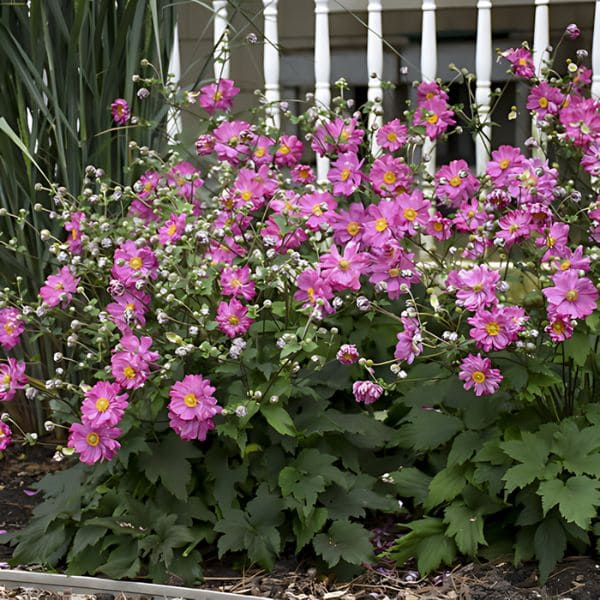
- Mature Size: 2-4 feet tall and 1-2 feet wide
- Bloom Time: Late summer to fall
- Sun Exposure: Part shade to full sun
- Soil Requirement: Moist, well-drained soil
Japanese Anemone features tall, slender stems topped with charming, cup-shaped flowers in shades of pink, white, and purple, blooming from late summer to fall. Its foliage is dark green and deeply lobed.
Japanese Anemones thrive in Zone 6 due to their ability to tolerate both part shade and full sun, making them versatile for different garden spots.
Regular watering helps them establish, but they are relatively drought-tolerant. These perennials are known for their resilience and ability to naturalize, gradually forming beautiful colonies over time.
Balloon Flower (Platycodon grandiflorus)
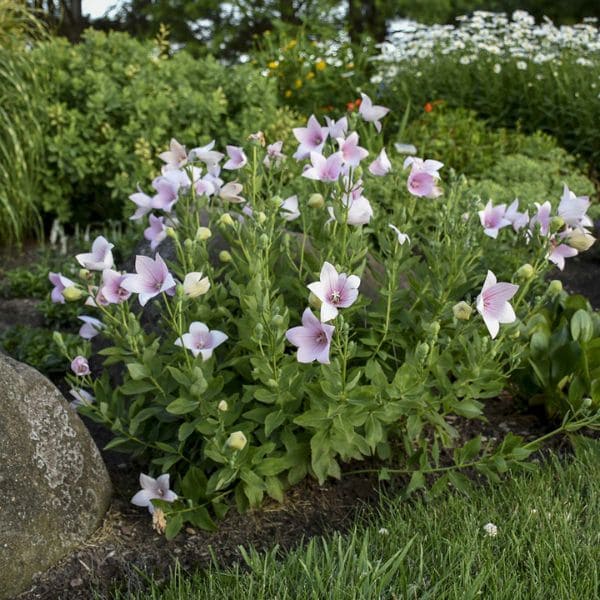
- Mature Size: 1-3 feet tall and 1-2 feet wide
- Bloom Time: Summer
- Sun Exposure: Full sun to part shade
- Soil Requirement: Well-drained soil
Balloon flowers are named for their unique buds, which swell like balloons before opening into star-shaped blooms in blue, pink, and white.
In Zone 6, the moderate climate allows them to flourish with ease, providing stunning blooms throughout the summer.
Their hardiness makes them an excellent choice for borders and rock gardens. They pair well with coreopsis and echinacea creating a colorful and dynamic garden display.
In traditional East Asian medicine, Balloon Flowers are used for treating respiratory issues. However, all parts of the plant are toxic if ingested.
Jacob’s Ladder (Polemonium caeruleum)
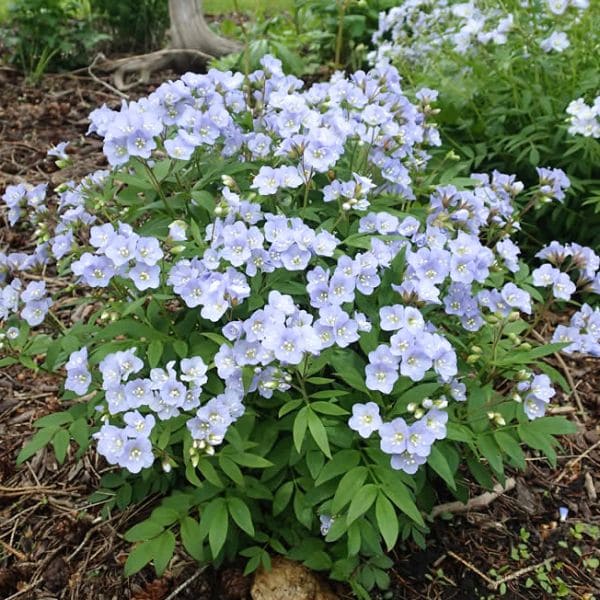
- Mature Size: 1-2 feet tall and wide
- Bloom Time: Late spring to early summer
- Sun Exposure: Part shade to full shade
- Soil Requirement: Moist, well-drained soil
The name “Jacob’s Ladder” refers to the biblical story of Jacob’s dream, symbolizing the ladder to heaven, and the plant’s foliage resembles a series of steps.
This plant is perfectly suited for Zone 6 due to its preference for part shade to full shade and its ability to flourish in moist, well-drained soil.
The cooler temperatures and ample rainfall typical of this zone create an ideal environment for it.
In addition, it pairs wonderfully with hostas, ferns, and astilbes, creating a lush and serene garden space.
Lamb’s Ear (Stachys byzantina)
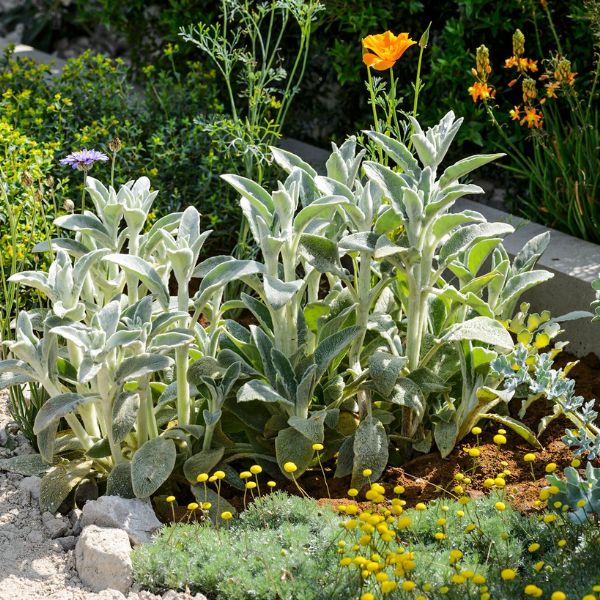
- Mature Size: 6-12 inches tall and 1-2 feet wide
- Bloom Time: Late spring to early summer
- Sun Exposure: Full sun to part shade
- Soil Requirement: Well-drained soil
Lamb’s ear owns soft, velvety, silver-gray leaves resembling a lamb’s ear, it’s a favorite among gardeners and children alike.
In late spring to early summer, this plant produces spikes of small, pinkish-purple flowers that rise above the foliage.
Lamb’s ear thrives in Zone 6 due to its adaptability to full sun and part shade, as well as its preference for well-drained soil.
Historically, Lamb’s ear leaves were used for their antiseptic properties in traditional medicine to treat wounds and stings.
Goldenrod (Solidago spp.)
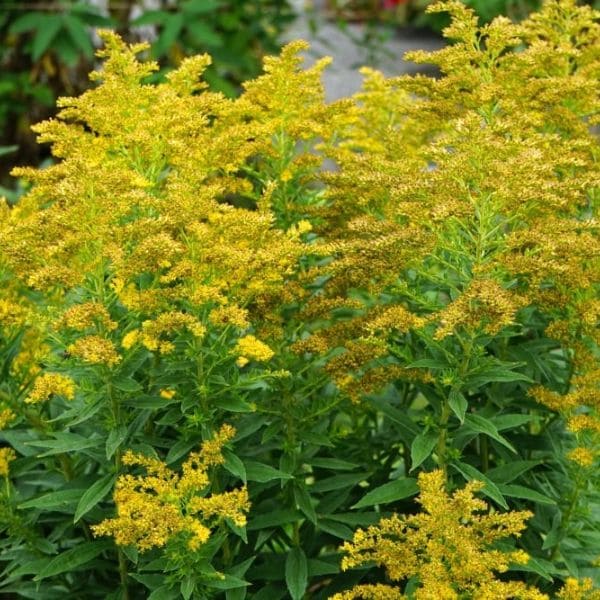
- Mature Size: 2-4 feet tall and 1-2 feet wide
- Bloom Time: Late summer to fall
- Sun Exposure: Full sun to part shade
- Soil Requirement: Well-drained soil
Goldenrod features tall, slender stems adorned with clusters of small, bright yellow flowers that bloom from late summer to fall. The foliage is typically green and lance-shaped.
It thrives in full sun to part shade and prefers well-drained soil, exceptionally suited to the diverse conditions of Zone 6.
Its adaptability to different soil types and moisture levels, combined with its drought tolerance, ensures that goldenrod remains a resilient and reliable choice for gardeners in this zone.
Historically, this plant has been used in traditional medicine for its anti-inflammatory and diuretic properties. It’s often mistakenly blamed for hay fever, which is actually caused by ragweed pollen.
Spiderwort (Tradescantia spp.)

- Mature Size: 1-2 feet tall and wide
- Bloom Time: Late spring to early summer
- Sun Exposure: Full sun to part shade
- Soil Requirement: Moist, well-drained soil
Spiderwort, named for its sap that forms thread-like filaments resembling a spider’s web, features long, arching, bright green leaves that provide a lush backdrop for its beautiful, three-petaled flowers.
Spiderwort thrives in Zone 6 due to its adaptability to a range of conditions. It can tolerate full sun to part shade, though it prefers part shade in hotter climates.
It grows best in moist, well-drained soil but can withstand short periods of drought once established.
Historically, Native Americans used Spiderwort for various medicinal purposes, including treating stomach issues and insect bites.
Brunnera (Brunnera macrophylla)
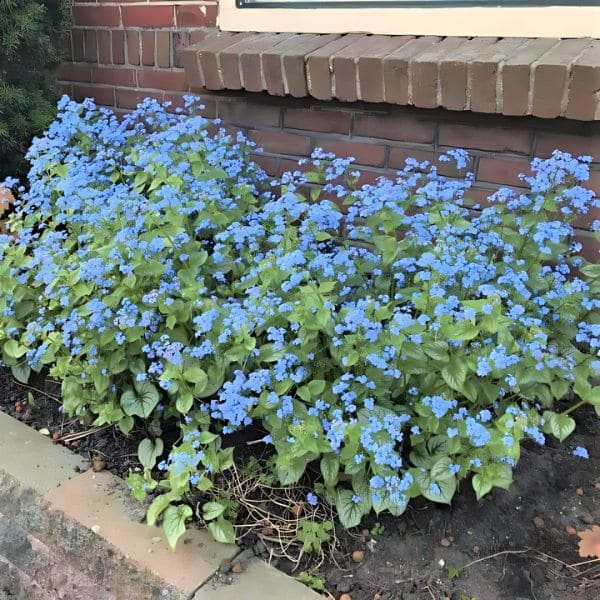
- Mature Size: 1-1.5 feet tall and 1.5-2 feet wide
- Bloom Time: Spring
- Sun Exposure: Part shade to full shade
- Soil Requirement: Moist, well-drained soil
Brunnera is adored for its heart-shaped, large green leaves often variegated with silver or white markings, adding texture and interest to any garden.
In spring, Brunnera produces clusters of small, sky-blue flowers that resemble forget-me-nots.
Brunnera thrives in part shade to full shade, making it perfect for Zone 6, where summers can be warm, and gardens often benefit from plants that can handle lower light levels.
This plant prefers moist, well-drained soil and is relatively low-maintenance. It is deer-resistant, ensuring that its delicate leaves and flowers remain intact even in areas with wildlife.
Winterberry (Ilex verticillata)
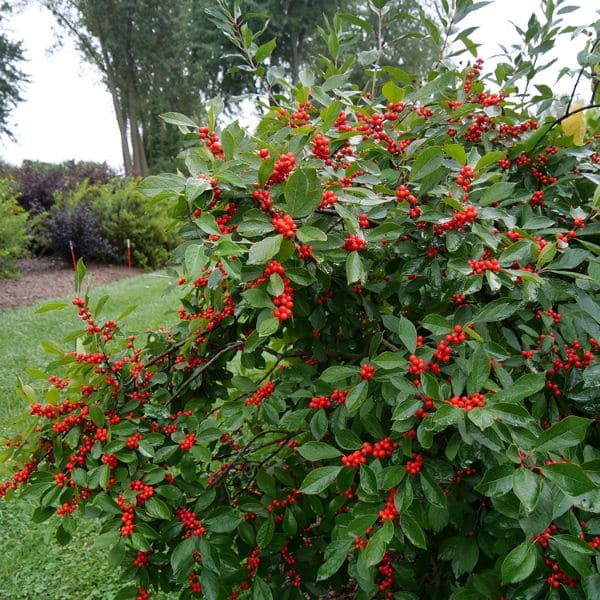
- Mature Size: 3-15 feet tall and 3-12 feet wide
- Bloom Time: Late spring to early summer
- Sun Exposure: Full sun to part shade
- Soil Requirement: Moist, acidic, well-drained soil
Winterberry, a stunning deciduous holly, features red berries that cling to bare branches, providing a pop of color in the winter landscape.
The foliage is dark green and glossy during the growing season, turning yellow to purple in the fall before shedding.
Winterberry is well-suited for Zone 6 due to its hardiness and adaptability to the region’s climate. It thrives in full sun to part shade and prefers moist, acidic, well-drained soil.
One of the key attributes of this plant is its low maintenance and high tolerance to wet conditions, making it an excellent choice for rain gardens and wetland areas.
Oregano (Origanum vulgare)

- Mature Size: 1-2 feet tall and 1-2 feet wide
- Bloom Time: Mid to late summer
- Sun Exposure: Full sun
- Soil Requirement: Well-drained soil
Oregano is a culinary staple, adding a warm, peppery flavor to various dishes. This plant produces small, pinkish-purple flowers in mid to late summer that attract pollinators.
Oregano thrives in full sun and well-drained soil, making it an ideal choice for the temperate climate of Zone 6.
This hardy herb is drought-tolerant and can withstand a range of soil conditions, though it prefers soil that is not overly rich.
Feather Reed Grass (Calamagrostis x acutiflora)
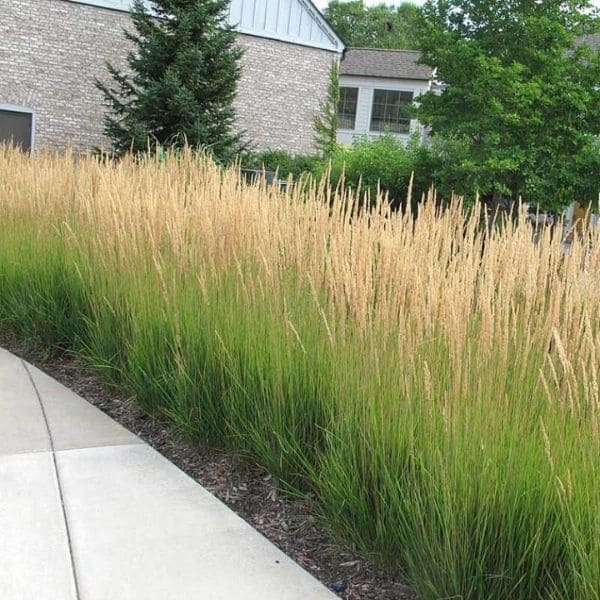
- Mature Size: 3-5 feet tall and 1-2 feet wide
- Bloom Time: Late spring to early summer
- Sun Exposure: Full sun to part shade
- Soil Requirement: Well-drained soil
Feather reed grass features narrow, arching green leaves and elegant, feathery plumes.
In late spring to early summer, it produces tall, feathery plumes that start as soft purple and mature to golden tan.
Thriving in full sun to part shade, feather reed grass prefers well-drained soil, making it an ideal choice for Zone 6’s varied climate.
It is exceptionally low-maintenance and drought-tolerant once established, requiring minimal care.
Columbine (Aquilegia spp.)
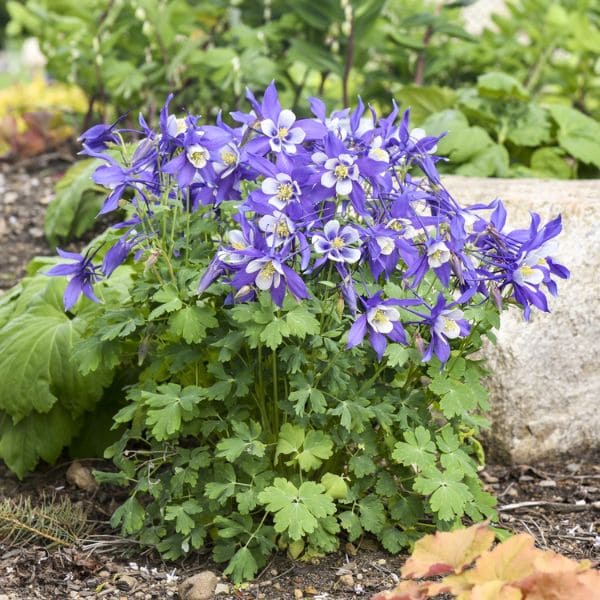
- Mature Size: 1-3 feet tall and 1-2 feet wide
- Bloom Time: Late spring to early summer
- Sun Exposure: Full sun to part shade
- Soil Requirement: Well-drained soil
Columbine features delicate, fern-like foliage and unique, spurred flowers in a variety of colors, including blue, purple, pink, red, yellow, and white, often with contrasting centers.
Columbine thrives in full sun to part shade, making it adaptable to various garden conditions typical of Zone 6.
It prefers well-drained soil and is relatively low-maintenance, which is perfect for busy gardeners.
While it has a rich history in folklore and traditional medicine, all parts of the plant are toxic if ingested, so plant it away from areas accessible to pets and small children.
